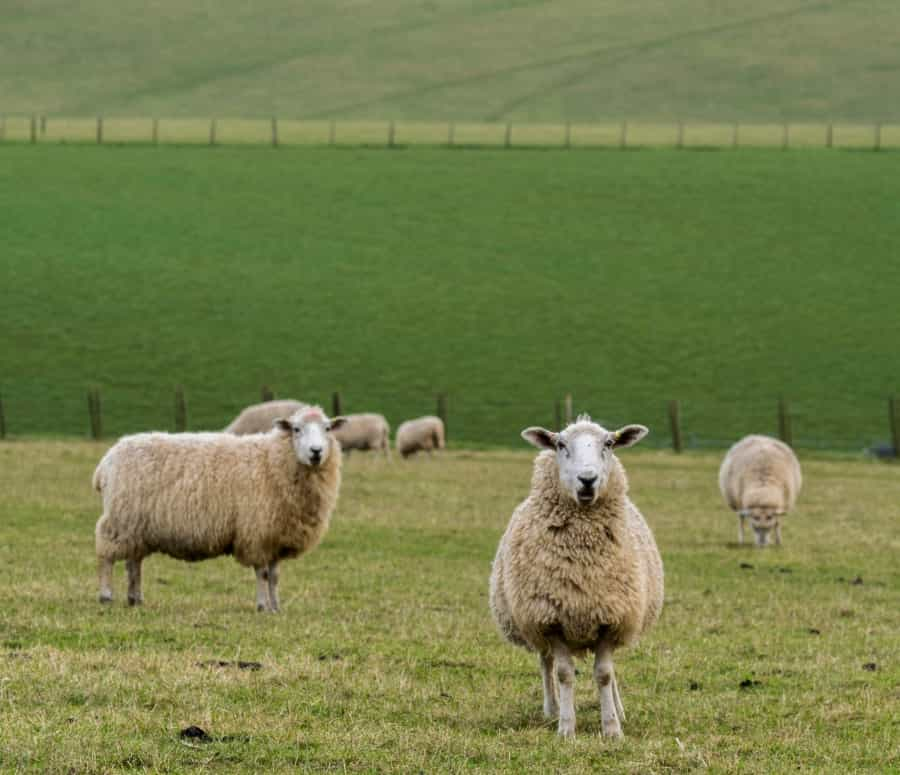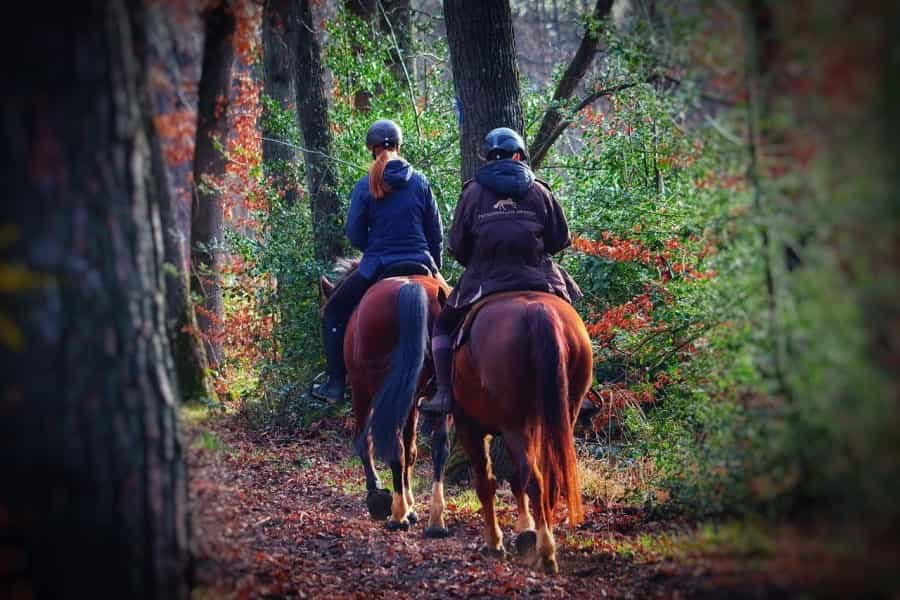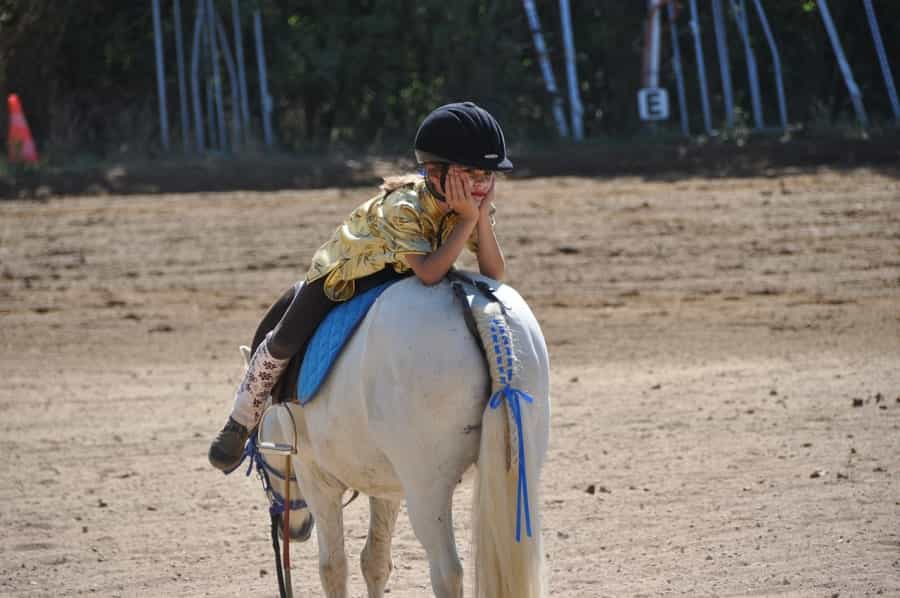Best Horse Riding Trails in the South Downs

With fast-draining, fast-drying chalk downs that make the going easy for horses and ponies, plus undulating grassland and woodland landscapes edged by stunning coastlines, the South Downs National Park is something of a paradise for riders.
Read on for Pitchup’s informative guide about all that’s good in the national park for riders, whether you’re looking for a gentle trot along a country track or a long-distance ride along the celebrated long-distance South Downs Way.
Best horse riding trails
The South Downs National Park has some of the best riding country in the UK, with around 745 miles (1,200km) of bridleways throughout the national park.
South Downs Way
Distance: 100 miles (160 km)
Level: Expert or accomplished riders only
Horse box parking: There is horsebox-friendly parking throughout the national park
A popular (for that, read 'often crowded’) multi-use trail stretching across Hampshire and East Sussex between Winchester and Eastbourne, the South Downs Way is a much-loved option for both experienced riders seeking a challenge and competent riders preferring to hack smaller sections. Either way, you’ll get a combination of mud-free (even in the rainiest of weather) going on fast-draining chalk terrain, staggering views over tree-topped downs, and bridleways wending their way through deciduous woodland and across farmland.
If you’re hoping to ride the length of the trail, it’s best to arrange equine-friendly accommodation along the route in advance. Expect your epic journey to take at least four days, covering around 25 miles (40km) per day. The route takes in some steep climbs and descents, so both you and your equine companion will need to be fit! Expect lots of gates to open/close along the way, and some stoney paths underfoot.
Good to know: As well as horse-friendly pubs and cafés, a series of water taps and troughs are provided along the route so horse and rider should never go thirsty.
Friston Forest
Distance: Several loops ranging from 3 to 12 miles (5 to 20 km)
Level: Family-friendly riding trails for all levels
Horse box parking: No box parking is permitted in the main car parks; you have to be a member of TROT to use exclusive horse box parking available by access code
One of the more recently established beech woodlands in the UK, the Forestry England-managed Friston Forest is a peaceful enclave with several clearly marked riding trails leading to views over the Cuckmere Valley flood plains and gorgeous South Downs chalk uplands. Hilly rides lead through Sussex countryside on a mixture of quiet forest tracks, bridle paths and open-access farmland (look out for grazing animals) that connect with the South Downs Way for longer hacks.
Good to know: TROT members have privileged access to several other bridle paths through the forest – display your TROT permit at all times when riding in the country park.

Queen Elizabeth Country Park
Distance: 6 miles (9.5 km)
Level: Intermediate
Horse box parking: Gravel Hill car park just off the South Downs Way
The most popular hack here follows a circular permissive bridleway, which means you won’t share the trail with walkers or cyclists. It’s clearly waymarked with white horseshoes on red-topped signs, and takes in peaceful woodland as well as chalk downlands with the chance of a flat-out gallop. Otherwise, you can follow a section of the South Downs Way as it weaves through the park, and there's a shorter option for anyone still building their confidence on horseback, following the Clanfield Bridleway (1.25 miles/2km) to the the welcome sight of a thatched, half-timbered gastropub in the village of Chalton.
Good to know: There’s a water trough for horses behind the Queen Elizabeth Country Park Visitor Centre, as well as refreshments (in spring and summer) for their human counterparts; barbecues and pizza ovens are provided in the park too.
Riding schools and equestrian services
For national park visitors who don't have their own mount, there are local equestrian centres offering lessons (check with the British Horse Society for approved riding schools in the national park), and Westerlands and South Downs Trekking & Riding School lead guided rides through stunning countryside for all levels of experience. If you want to bring your own pony on holiday with you, several yards including Southdown Farm offer a full livery service.
Riding for visitors with disabilities
The South Downs is accessible for all visitors, and offers equestrian experiences to visitors with a range of disabilities, whether mental or physical.
-
Based at Albourne Equestrian Centre near Hassocks in West Sussex, the South Downs Riding for the Disabled Group is volunteer-led. They organise leading-rein rides, gymkhana games and indoor lessons for people with a range of disabilities.
- The horse-led all-terrain wheeled vehicles used by Pony Axe S allow wheelchair users to access all areas of countryside, including beaches and muddy tracks.
Pitchup's guide to accessible South Downs activities has more ideas for things to do in the national park for visitors with disabilities.
Essential tips for horse riding in South Downs National Park

Follow the Countryside Code: if you’re at all unsure about the etiquette of riding in the park, the authority has a comprehensive guide to what’s acceptable and what’s not.
What to wear
The following is a basic list of essential safety equipment for all riders, whatever their experience.
-
A hard riding hat
-
Comfy boots with small heels
-
Jodhpurs or jeans, and layers like T-shirts topped with waterproof fleeces or jackets and a high-vis tabard
-
A body protector
-
A long waterproof coat if it’s raining
-
Fly repellant, lip balm and sunscreen in summer
Safety rules
You’ll often find yourself sharing trails and paths with dog walkers, hikers and cyclists in the national park, so please bear the following in mind:
-
Wear a hi-vis jacket so you can be easily seens
-
Ride in single file so other trail users can pass you safely
-
Use the correct hand signals so others can understand what you’re doing and where you’re going
-
Watch out for dogs off their leads
-
Always tell someone where you’re going and what time you’ll be back
-
Always carry a mobile phone with you, in the unlikely event of an accident
Respect the environment
Around 85 per cent of the South Downs is farmland, which brings with it a specific set of issues.
-
Look out for farm animals grazing on open land
-
Don’t cause damage by jumping gates, fences or hedgerows
-
Stick to designated bridleways
-
Take all litter away with you and dispose of it properly
Preparation

Being organised is key for the safety of both horse and rider, especially if you are embarking on the multi-day South Downs Way.
-
Ensure your horse is fit and well-shod
-
Carry essentials such as water, snacks
-
Take a map or GPS navigation app
-
Take a basic first-aid kit
-
Carry a hoof pick and check for stones every morning
-
Spray your horse/pony with fly repellant in summer
With spectacular landscapes of downs, woodland and dramatic coastline, the South Downs National Park is a fantastic destination for all horse riders, from novice hackers to experienced equestrians. The chalk downland is particularly inviting for horses and ponies – even after rain – as it dries out quickly and never gets too heavy.
If you’re a horse-mad family looking for an equestrian break in the national park, you’ll be needing child-friendly accommodation. Have a look at Pitchup’s selection of well-priced family campsites, or pay a little more for a luxurious glamping stay.
Looking for more equestrian breaks in other areas of south-eastern England? Check out our guide to riding in the New Forest. And if you'd rather follow the South Downs Way on foot, have a look at our detailed guide for more information on the route.